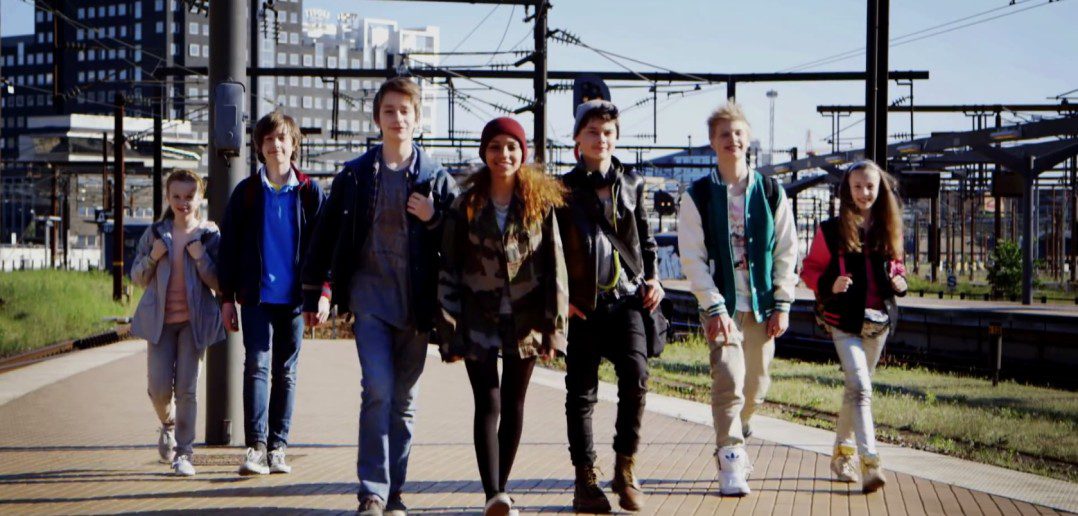The Nordics have always been innovating in all fields, not least in the ones related to technology. From the three-point seatbelt to Ikea’s ready-to-assemble furniture, from the lure of Angry Birds and Minecraft to the irreplaceable usefulness of Skype, Spotify and the implantable pacemaker – innovations are one of the core virtues of the digital Nordics. No wonder that this also comes to the fore in the media industry, where digital innovation is constantly ongoing: this fourth article in the series ”Focus on the Nordics” explains why!
Matias Myllyrinne, CEO, Remedy Entertainment (Max Payne, Agents of Storm, Quantum Break)
One of the main reasons why the Nordics have been quite successful when it comes to breaking globally is the fact that there has been next to no domestic market to aim for, regarding most products. That means that most things coming out of the Nordics – and especially in the digital field – have been aiming at going global from day one. Underlying factors have been a good education to build on, combined with great coding skills and a certain business savvy, which is crucial if you want to succeed.
TV and gaming can learn a lot from each other. At the end of the day, what all of us are doing is competing for time, just as everything else like internet and social media and so on. Now, TV has for a long time worked on mastering serialisation, while on the other hand (some) games have mastered the art of creating a deep emotional engagement and helping people build a hobby they can immerse themselves in.
I believe the Nordic scene has some great strengths in numbers. Outside of the superstars (Supercell, Mojang, DICE etc.) the start up scene as a whole is world class. The energy and the attitude these companies show is impressive.
[youtube]https://www.youtube.com/watch?v=08rOFcXLuFk[/youtube]
Mikael Hernström, CEO, Art89
One of our first goals when we founded Art89 seven years ago was to cast new talented TV-profiles, since no one had done it for a long time. The demand was there. At the same time SVT was starting up their Play-service. The talents we did find were young, as was their audience. It all went down well with SVT Play, since the younger demographics weren’t watching traditional TV. Series like Rebecca & Fiona and Ana Gina Show premiered and were a hit with the audience.
The greatest benefit for us was that we had a lot of possibilities to experiment and try our limits. We were given the possibility to create shows the audience had never seen before, not on SVT or on any other TV channel for that matter.
In Sweden, online (non-linear) television has rapidly gained a lot of viewers. Our clients are also changing their modus operandi; where we, back in the days, got shows “for Play” commissioned, now they’re diversifying and commissioning drama, election programs or comedies, and increasingly for an older audience as well.
Nordic World are distributing a couple of our formats; The Dictator, now about to be produced in Norway, and One Night at the Castle. One Nordic show I’ve been really impressed with lately was The Sweat Shop (watch the trailer below), where young trendy people travel to the factories that make the clothes they buy every day. They get to work at the factories themselves, meet the people working there and genuinely understand what the issue is. A lot of food for thought for young people.
Sweatshop trailer
Hildri Gulliksen, head of NRK Super
We see that the children are the first group of people to adapt to new technologies and create new ways to use them and new habits. Up to 90% of children in Norway have access to a tablet computer of some kind, and we can observe that kids access the programming on NRK Super as VOD – which is about 35% – and as linear TV, which is about 65%. Children avail themselves of VOD to a much higher degree than adults.
It’s important to create, buy and distribute the best content possible. But if we want to stay relevant for the children in the future as well, we need to reach them where they are. A consequence is us making a lot of effort creating great VOD solutions as well as being very active on social media. In addition we’re focusing on developing our most important franchises into good 360-degree projects that inspire and serve the children in different ways.
I think the Nordics are a bit different when it comes to media for children. We often include the kids themselves in very important roles, carrying the content. We offer high production quality paired with innovative ideas from a great number of different fields.
If anyone wants to acquaint themselves with great children’s programming, DR’s Pendlerkids (watch the trailer of the second season below) is an important an innovative drama series we’ve enjoyed tremendously. SVT’s Labyrinth is an imaginative and exciting studio game show that’s been a great success on our channel. Finally I’d like to mention our three news shows for kids – Lilla Aktuellt from SVT, DR’s Ultranyt and Supernytt from us at NRK Super. They are brave, honest and brilliant news shows that help kids to understand and gain an interest in the world around them.
[youtube]https://www.youtube.com/watch?v=Up31U4gm5sI[/youtube]
Simon Staffans is a formats developer for MediaCity Finland, and a frequent contributor to MIPBlog. Read all of his posts here.
Top photo: DR‘s kids show Pendlerkids




